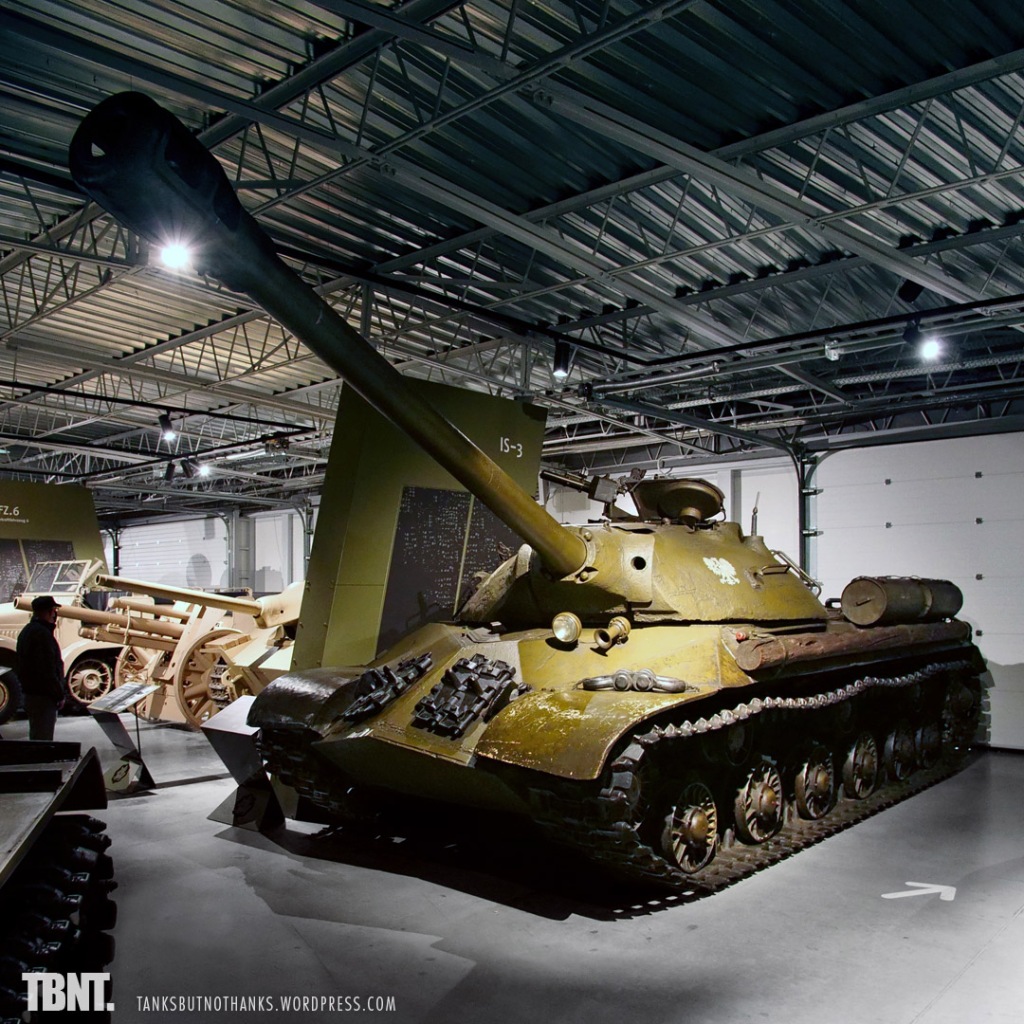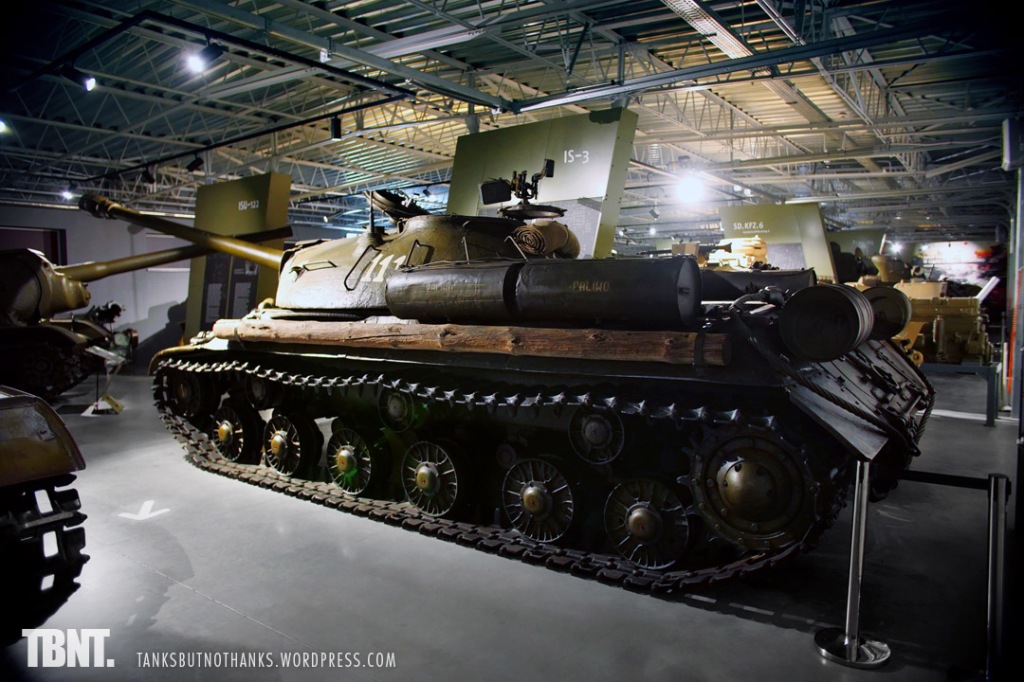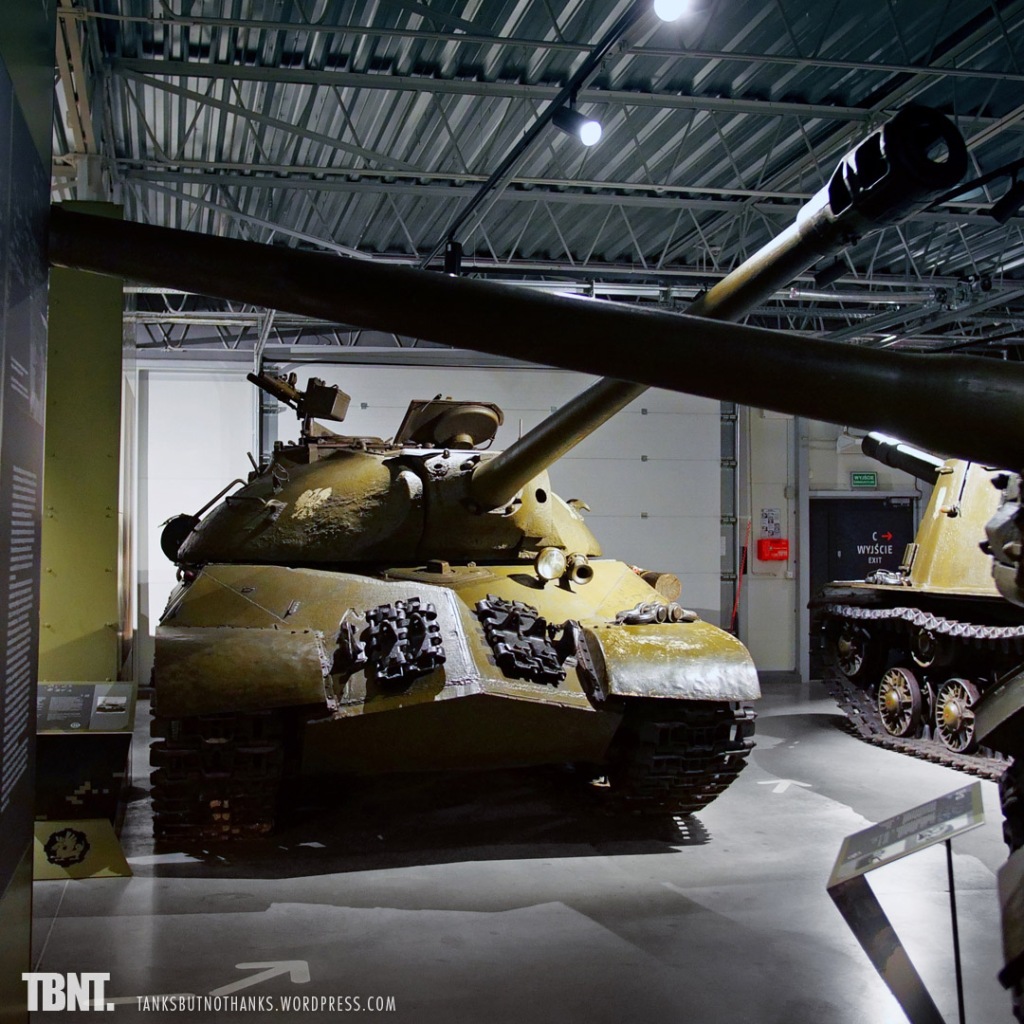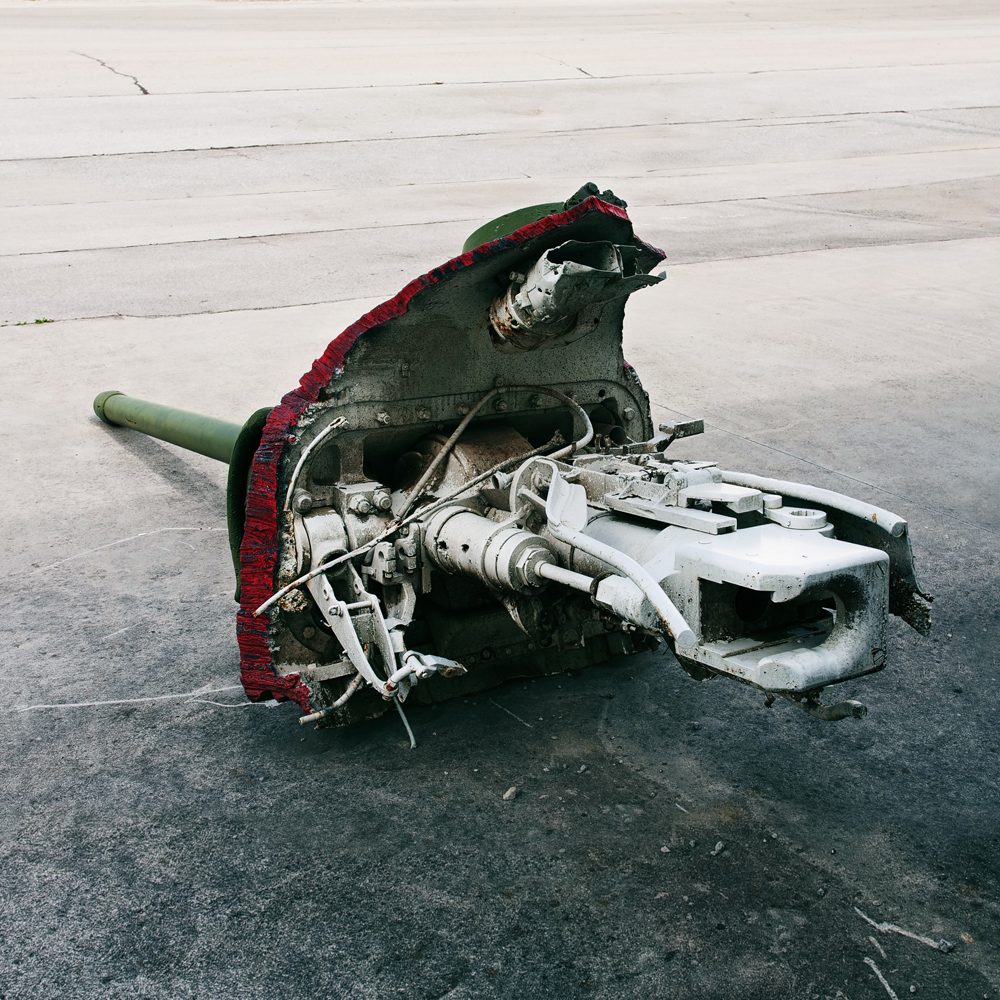Type: Heavy Tank
Nation: Soviet Union
Period: Cold War
Location: Muzeum Broni Pancernej w Poznaniu, Poznań, Poland

Berlin tank panic
The IS-3 caused a serious shock among the Western Allies when it was first presented publically while taking part in the Berlin Four Nations Victory Parade on 7 September 1945. Having just celebrated the end of the Second World War, the world was now on the edge of stumbling into the next confrontation between superpowers – and the West had nothing of the like in its arsenal; only the much less powerful M26 Pershing. The Soviet Union‘s latest heavy tank had been developed on the basis of the IS-2. It kept the same 122 mm gun, the same 12-cylinder 600 hp V-2 diesel and the same transmission, but it offered the crew much better protection due to the frying pan-shaped turret and the distinctively angled hull armour, which gave the tank the nickname „Shchuka“ (= pike).

Too late and yet the first
The IS-3 had been designed during World War 2 to withstand the Tiger II’s 88 mm gun at combat distance, but it came too late to see any action in Europe. The first vehicles were rushed into production and therefore suffered severe mechanical problems such as cracking weld lines and failing transmissions. Of course the Western Allies had no idea about all that and quickly started developing their own heavy tank programmes to counter the IS-3, eventually resulting in the American M103 and the British Conqueror. So even if the „Iosif Stalin 3“ may not have been a very effective design itself, it’s impact on tank design worldwide cannot be understated.

Heavy twins
This particular vehicle is one of only two IS-3s that were given to the Polish Army shortly after the war‘s end. It was trialled in Poznań and took part in parades and celebrations, but the Poles never adopted the IS-3 for their armoured units. This tank with the turret number 111 came to the Museum of Armoured Warfare in the 1960s. The other Polish IS-3 can be seen on display at the Museum of Polish Military Technology in Warsaw.


2 responses to “IS-3”
[…] that this weapon would not be sufficient to defeat the Soviet IS-3, later prototypes were fitted with an semi-automatically loaded 120 mm gun in an oscillating turret […]
LikeLike
[…] was designed for the traditional role of a medium tank operating alongside heavy tanks such as the IS-3 or the T-10. The classification of light, medium and heavy tanks was not done away with until the […]
LikeLike